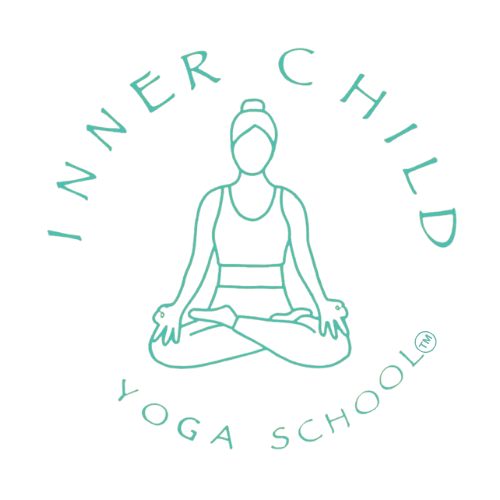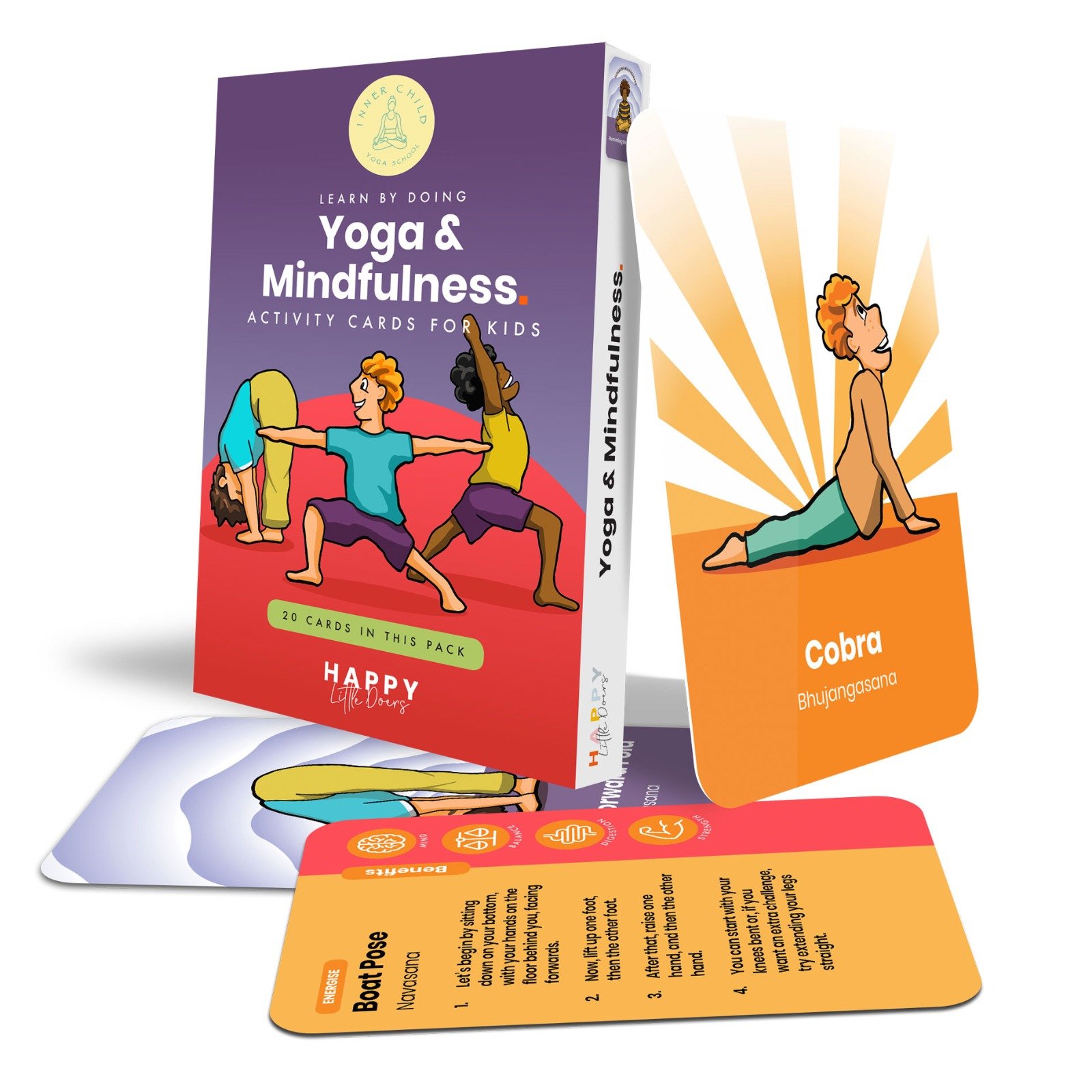How Yoga in the Early Years Helps Children Develop Motor Skills for Writing and Cross the Midline
Yoga has become an increasingly popular tool in early childhood education, and its benefits go beyond just helping children calm down or manage stress read about more benefits in my blog post about the scientific research into the benefits of children’s yoga. In fact, integrating yoga into a child’s daily routine can play a crucial role in developing key motor skills needed for early writing. Through the EYFS (Early Years Foundation Stage) framework and Development Matters, we know that fostering these foundational skills in the early years is essential for preparing children for later academic success.
But how exactly does yoga help in building the gross and fine motor skills necessary for writing, and how can it support a child in crossing the midline? Here, I will discuss how yoga can support children with early writing all while aligning to the Early Years Foundation Stage curriculum.
Understanding Gross and Fine Motor Skills in Early Writing
Before we look at the impact of yoga, it’s important to understand the difference between gross and fine motor skills and why they are significant in early writing development.
Gross Motor Skills
Gross motor skills involve the large muscles in the body, particularly those in the arms, legs, and core. These are the muscles that help children stand, walk, run, and balance. When it comes to early writing, gross motor skills are the foundation. For example, a child needs to have strong shoulder muscles to support the arm while writing. Without adequate gross motor development, fine motor skills can be difficult to acquire. To share some child safe yoga poses why not grab a pack of my Yoga and Mindfulness flashcards with all the cues, pictures and poses ready for you to share with children? Grab a pack here.
Fine Motor Skills
Fine motor skills are more precise movements, using smaller muscles, especially those in the hands and fingers. These are the skills necessary for gripping a pencil, forming letters, and controlling the pressure of the writing instrument. For young children, developing fine motor control is a slow process, and activities like yoga can enhance this development.
The Development Matters guidance for the EYFS encourages practitioners to provide opportunities that promote the use of large and small muscles, recognising how they lay the groundwork for writing.
Yoga and Gross Motor Development
Incorporating yoga into a child’s routine can support gross motor development by strengthening the muscles of the core, shoulders, and upper arms, all of which are essential for sitting upright and using writing implements.
Postures for Gross Motor Skills
Yoga poses such as Adho Mukha Svanasana (Downward Dog) and Vrksasana (Tree Pose) engage large muscle groups, helping to build strength, stability, and coordination.
• Adho Mukha Svanasana (Downward Dog): This pose strengthens the shoulders, arms, and legs, while also stretching the spine and improving balance. As children hold this pose, they build endurance in their shoulder muscles, which are crucial for holding a pencil correctly.
• Vrksasana (Tree Pose): Balancing on one leg helps to strengthen the core and improve stability. The ability to balance is directly linked to developing a strong core, which children need to sit still and maintain an upright posture for writing.
Additionally, yoga sequences that involve moving between postures, such as a modified Surya Namaskar (Sun Salutation), encourage coordination, an essential skill when children are learning how to control their body movements and develop the fluidity needed for writing.
Encouraging Spatial Awareness
Yoga also enhances spatial awareness, which is critical for writing. Children need to understand where their bodies are in space to appropriately control their hands and fingers when writing on paper. For example, flowing through poses like Virabhadrasana (Warrior) and Setu Bandhasana (Bridge Pose) requires children to move their limbs in specific ways, promoting an understanding of spatial relations.
Development Matters reminds us that children develop these skills through everyday activities. Yoga presents a structured yet playful way to enhance this natural development.
Yoga and Fine Motor Development
While gross motor skills are crucial for posture and stamina, fine motor development is the key to manipulating writing tools with control and precision. Yoga can help strengthen the smaller muscles in the hands, wrists, and fingers that children will eventually use for writing, cutting, and drawing.
Postures for Fine Motor Skills
Yoga poses and movements that require children to press their hands together or stretch their fingers are particularly beneficial for fine motor development. Here are a few examples:
• Pranamasana (Prayer Pose): This simple pose involves pressing the palms together at the chest. It encourages children to use both hands in coordination, which helps in developing the strength and dexterity needed for handwriting. Children can also practice Anjali Mudra (hands in a prayer position), which helps strengthen the small muscles in the fingers.
• Hasta Mudras (Hand Gestures): These symbolic hand positions, such as Gyan Mudra (index finger and thumb touching), can help children refine their finger movements. Practising these gestures supports fine motor control, which is essential for gripping and manipulating a pencil or crayon.
• Utkatasana (Chair Pose): While this pose predominantly engages larger muscles, having children stretch their arms forward and keep them steady engages their forearm muscles and promotes wrist stability, an important aspect of fine motor control.
Pick up my Yoga pose cards pictured above over in my store here.
Enhancing Hand-Eye Coordination
Yoga also improves hand-eye coordination, which is key in learning to write. Movements like following the hands with the eyes during a Tadasana (Mountain Pose) flow, or tracing shapes in the air with the fingers, help children practice coordinating visual input with physical action.
Crossing the Midline and its Importance for Writing
One of the key challenges in early childhood development is the ability to cross the midline — the invisible line that divides the body into left and right halves. Crossing the midline is when a child uses a limb (e.g., a hand or foot) to cross over to the other side of the body. This skill is crucial for many tasks, including reading and writing, as it allows for bilateral integration, where both sides of the brain work together.
Yoga for Crossing the Midline
Certain yoga poses and movements are excellent for encouraging children to cross the midline and develop bilateral coordination. The following poses and practices help children practice this essential skill:
• Parivrtta Trikonasana (Revolved Triangle Pose): This pose encourages the child to twist the torso, reaching one hand across the body to the opposite side. This action requires crossing the midline and is highly effective in developing the necessary brain connections for tasks like writing, which involves moving the hand across the page.
• Eagle Arms in Garudasana (Eagle Pose): Wrapping one arm under the other to create eagle arms is a great way to encourage midline crossing. This action supports the coordination of both sides of the body and promotes flexibility in the shoulders and wrists, which is important for fine motor tasks.
• Simple Seated Twists: Even in a seated position, twisting the body to look over the shoulder or reach across the body encourages children to cross the midline. These twists not only promote flexibility in the spine but also engage the brain in bilateral movements, necessary for smooth, coordinated hand movements in writing.
How Midline Crossing Supports Writing
When children cross the midline, they are building the neurological connections that allow them to use both sides of the brain together. This is essential for writing, as children need to be able to reach across their body to write smoothly across a page. Crossing the midline is also important for developing hand dominance, as children eventually need to establish a preference for one hand when writing.
The EYFS framework encourages activities that promote this kind of integrated physical development, highlighting the importance of fostering strong motor skills as part of overall cognitive development.
Yoga and Mindfulness for Early Writing Success
Yoga not only strengthens the body but also encourages mindfulness, which can be particularly helpful for children as they begin their writing journey. Writing requires concentration, focus, and patience — all of which are nurtured through the mindful aspects of yoga.
Make it stand out
Breathing Exercises and Mindful Movement
Simple breathing exercises like Belly Breathing or Bee Breath (Bhramari) can help children focus their attention and calm their minds before beginning a task like writing. This mindfulness can lead to better concentration and improved fine motor control, as children become more aware of their movements and posture.
Building Confidence and Self-Regulation
Yoga teaches children to tune into their bodies and regulate their emotions. Learning how to control their breath and balance in different poses builds not only physical strength but also self-confidence. This sense of achievement and self-regulation is crucial for children when they are learning to write, as it can be a challenging and frustrating task at times.
Yoga as a Holistic Approach to Motor Skill Development
Incorporating yoga into the early years is a holistic and enjoyable way to help children develop both gross and fine motor skills, preparing them for writing and many other key tasks. By strengthening the muscles, improving coordination, and encouraging the crossing of the midline, yoga provides the perfect foundation for early writing success, in alignment with the goals of the EYFS framework and Development Matters.
Yoga’s benefits go beyond the physical, nurturing mindfulness and self-regulation, which are equally important as children embark on their academic journey. So, whether through fun animal poses, balance challenges, or simple breathing exercises, yoga can be an incredibly effective tool for promoting motor development in the early years.
Encouraging your little ones to roll out a mat and explore yoga can be a playful and powerful step towards helping them develop the skills they need for writing and more!




